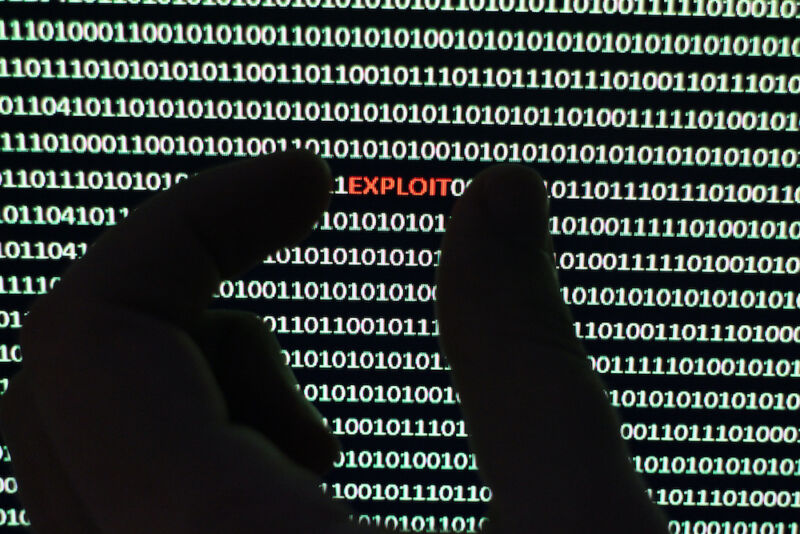Preview: Ama’s Lullaby (PC – Steam) ~ Hacking The Point-And-Click Genre

Back in 2017, a developer from France contacted me about their new point-and-click sci-fi game in the works called Ama’s Lullaby. But, it’s more than a point-and-click game, it’s also a hacking game. Now, this developer works on this game in his free time after his day job and with a small budget. Sometimes these passion projects die due to lack of time, money, motivation and/or just interest. But it looks like Ama’s Lullaby isn’t going to be one of those projects. Earlier this year, a demo of the game got released. Now, I asked the developer if he was interested in streaming this demo with us, and he did. Here is a link to part 1 & part 2. Sadly, due to overheating of Klamath’s computer, it had to be cut into two parts and the ending was quite abrupt. Now, this stream is almost a month ago, and I still wanted to write an article about this game. So, what do I think of the demo? Am I still as impressed when I saw it during the livestream, or is my opinion going to change when I’m not back seating and playing it myself? Let’s find out in this article.
Hacking The Point-And-Click Genre

The story of this demo is quite simple. Ama enters the police station and gets new tasks to aid the space colony she is in. Overall, the story is told more naturally compared to other games. Mostly, we get an opening where the main story of the game is teased, but not in this game. During interactions with the others, we get little glimpses into the world and story. Now, this is a tricky thing to pull off, since either you have to force the player to interact with everybody or risk that some players miss potentially important information. On the other hand, info dumping on the player isn’t always the best solution.
Now, in this space colony, there is an AI that makes a lot of decisions. It turns out that Ama and her dad have created that AI and the software to interact with it. She is one of the ambassadors of the human race. But it doesn’t take too long before strange things start to happen, and you notice that not everything is what you think it is.
The dialogues in this game appear above the character’s their head. When it’s cursive, you know it’s a thought. Not only that, you have simple sound effects that appear to put some additional power to the dialogues and to quickly differentiate between thoughts and spoken dialogues. Currently, there are plans to fully voice act this game, but if those plans fall through, I’d recommend to the developer to have different sound effects for the dialogues for different emotions.
Now, the game cold opens with an old school terminal as a main menu. This might be a bit jarring for new players who aren’t used to working with the command line. Personally, as somebody who knows how a command line works, I really love this touch. Since, this interface is also present in a lot of puzzles in the game. It fits the atmosphere and style of the game as a glove. To be honest, I think that with some minor polishing, it would be perfect.
There are a few things I would change. First, I’d get rid of the case-sensitive commands. The main reason is that a lot of people have the default keybinding for the Steam overlay with is… Shift+Tab. Since I love using autocomplete, it got pretty frustrating when I was holding my shift button and tabbed to autocomplete and my Steam overlay popped up.
A second thing I’d change is to allow the user to enlarge the font of terminal. The reason for that is because it doesn’t really scale pretty well with people who are using larger monitors.
Now, since this game is still in development and this is just the demo… I can totally excuse that there are features not present. Like pushing the up arrow to get the last command, or the help feature not always working correctly in all menus. For example, if you are in the options menu and use “QUALITY HELP”, you get information but if you first write “QUALITY” to see the options you can input and then “QUALITY HELP”… It bugs out and doesn’t give you help at all. Another small bug I noticed is that for some reason, the enter button on my numpad didn’t enter but always selected the whole text. But hey, during the stream the developer said that some of these things are on the list to get fixed for the full game.
Cyberpunk Sci-fi

I was impressed with the visuals of the game when we were playing this game on stream. While I haven’t played the Blade Runner games yet, I have seen a lot of people talk about it and know the visual style of the game. This game really mimics that style extremely well. You really feel like you are in a sci-fi world with some older technology than we have compared to our own technology.
Also, something I really love in this demo is that everything is one big space. You don’t really have “screens” in this game, like in a Broken Sword game for example. No, the camera swings and follows Ama as if she was in a movie. This sells the illusion of the area even more. While I’d have loved to see the details the developer put in every scene more up close sometimes, the more zoomed out look gives you a better overview on the scene. It almost feels like you are watching Ama through security camera’s or a drone camera in a way.
The biggest thing that I want to point out in terms of the visuals is Ama herself. The game goes for a more dark and dimly light environment and with a main character that’s wearing black clothes, it’s extremely easy to lose Ama in the scenery. It wouldn’t surprise me if they gave our main character in Blade Runner a brown coat for that reason, so you can more quickly see the main character without breaking the visual style of the game. But, overall, this is almost a nitpick. Since, it didn’t happen a lot that I lost Ama in the scene. It mostly happened when I was replaying parts of the demo while writing this article.
Now, I want to talk about the command line. The tutorial in this game on how a command line works is actually well done. I love how it doesn’t hold the players hands and tries to force them to input the right thing. It really lets you experiment with it and learn how it works. All the while, a small guide on how things work is displayed on the top of your screen.
This whole command line mechanic in this game is a breath of fresh air. It’s impressive how true to reality the whole command line is. While it uses some creative liberties here and there to make it fit into the game world, overall, it might be a real command line interface that’s open in the game.
In this demo, you have a few tasks to complete. Most of these tasks involve fixing various things. One task is highly dependent on the command line. This was quite easy for me since, like I said, I know how to use a command line. Visually, it’s a bit tricky during the tutorials in the network view since it’s not really clear/easy on how you can scroll up or down while in the network view. Using the mouse mostly scrolls around the network map. I think an easier way to scroll up and down in the terminal could be useful there. Also, when you have to input a command that’s longer than the terminal screen, I’d start a second line. Since, that’s how real life works. Or move the whole thing, and not let the username stay.
Final thoughts and future wishes

Overall, the demo is quite short. If you don’t know what you are doing and exploring everything, it will take you mostly two hours to complete. But if you know what to do, you can finish this in 10 minutes. Yet, the impression I got from the stream hasn’t changed. This game has quite a lot of potential but it needs some polish here and there.
There are some minor things like some objects not being solid and Ama being able to run through them, but there are also more major issues. The elevator bug the developer Marc mentioned during the stream, happened to me. Ama didn’t go up with the elevator and she was stuck. I think it was related to another bug I encountered where the head of IT got stuck in an animation loop. Somehow it was like Ama was near him while Ama was walking in other parts of the station. I don’t know what exactly triggered that, and I have replayed the demo trice to try and get it back into that bugged state, but I was unable to find the cause and I was unable to replicate it.
Currently, there is one way to save the game. There are several terminals in this demo where you can save your game. You only have one save slot. There is also no manual saving of the game. So, remember that. You can also only load from the main menu.
Reviewing a demo is always tricky to do. Especially if the game is still in development, since you never know for sure how the final game is going to look like. Yet, this demo is extremely promising. The puzzles where a lot of fun and after playing the demo, I had the same feeling that Klamath had at the end of the stream. I want to play more or similar games like this.
I could start talking about how the sound effects are amazing but there isn’t enough music yet. But, at one hand, the lack of music really sells the atmosphere of the game a lot more but on the other hand, the music during the terminal sections is really enjoyable. But, I’m sure that in the full game we shall see more music.
Just like I’m convinced that when the full game releases and the players find bugs, they will get fixed. While I was talking with Marc during the stream, I really felt the passion for creating this game and how he wants to make it the best experience it can be for his players. So, if you are interested in this game after reading this article in any way shape or form, I highly recommend that you give this game a chance, play the demo for yourself and give the developer feedback via his Discord or any other of his official channels.
I can’t wait to see and play the final game. Various things got revealed and talked about during the stream and I have to say, it was an amazing experience and conversation. I was already interested in seeing this game when it was on KickStarter but now that I have played the demo, I think we are on a winner here. This game will put an interesting twist on the point-and-click genre and will be interesting to anyone who enjoys adventure games with a sci-fi influence or just enjoy more unique puzzle games.
I want to thank Marc for reaching out to me and talking about his unique project. You can be sure that when the full version releases… me and Klamath will play through it and most likely stream it. And I’ll write a more in-depth article on the final product. Since, I might have not talked quite in-depth in this article but I want to hold off my final opinions when the game is fully released.
If you have read my article, played the demo and/or watched our stream, I’m curious, what did you think about this game? Feel free to talk about it in the comments. Am I overhyping the game or overlooking flaws? Or is there something you’d love to see in the full game?
And with that said, I have said everything about the game I want to say for now. I want to thank you for reading this article and I hope you enjoyed reading it as much as I enjoyed writing it. I hope to be able to welcome you in another article but until then, have a great rest of your day and take care.









